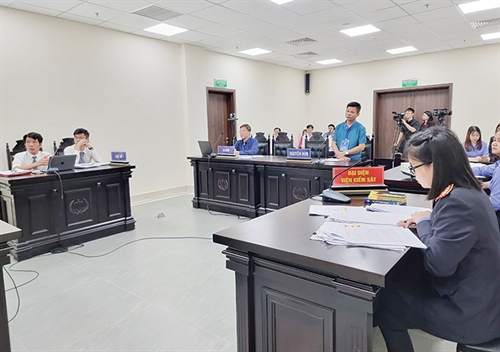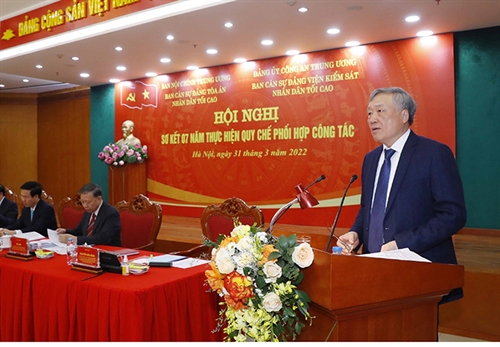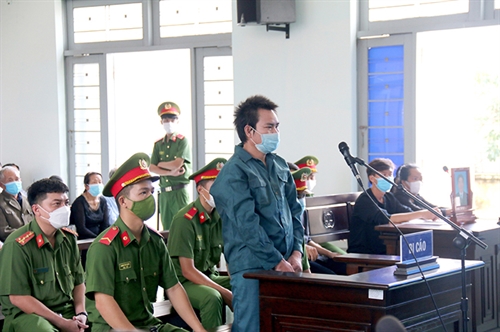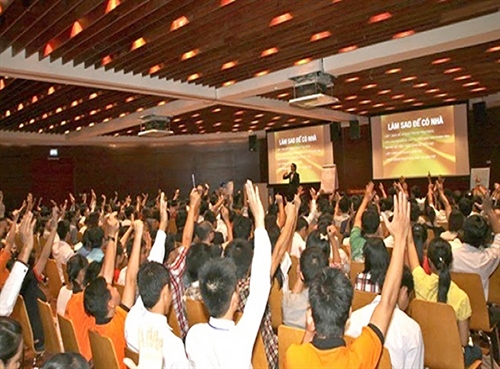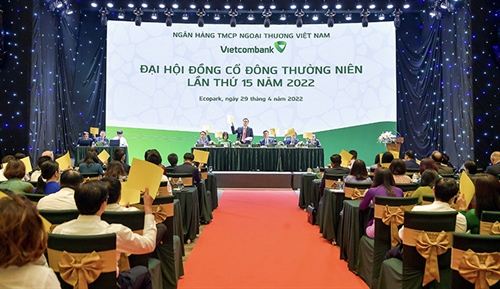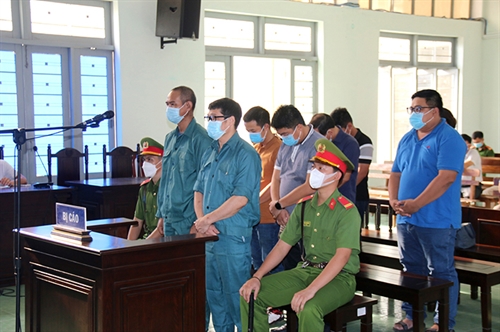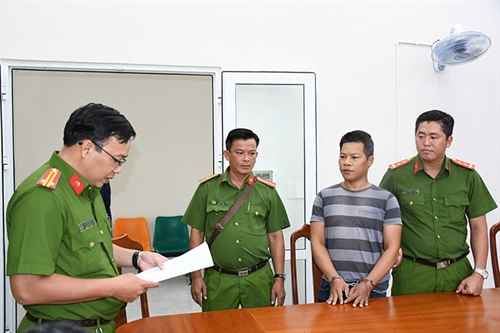Phan Thi Phuong Hien[2]
Criminal Law Faculty, Ho Chi Minh City University of Law
Definition of child sexual abuse
As defined under current regulations[3], a sexual crime against a person aged under 16 years means using force, threatening to use force, coercing, enticing or inducing under-16 persons[4] into sexual acts, including rape, having forcible sexual intercourse, having sexual intercourse with or having obscenity against under-16 persons, and employing under-16 persons for the purpose of prostitution or pornography in any form.
In pursuance to the 2016 Law on Children (the Law) and the definition of child sexual abuse, it can be determined that sexual crimes against children prescribed in the 2015 Penal Code, revised in 2017 (the Code) include raping under-16 persons, having forcible sexual intercourse with persons aged between full 13 years and under 16 years, having sexual intercourse or other sexual acts with persons aged between full 13 years and under 16 years, having obscenity against persons aged under 16 years, and employing persons aged under 16 years for the purpose of pornography[5].
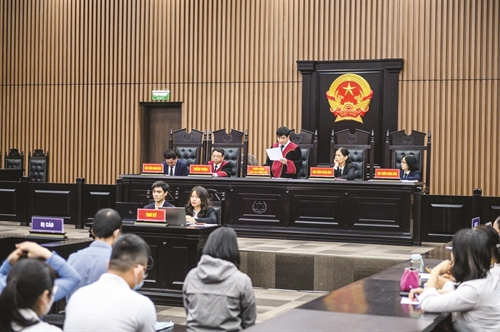 |
| A court hearing in Hanoi __Photo: VNA |
Pluses of the Code’s provisions on sexual crimes against children
Firstly, the Code’s articles and clauses on sexual crimes against children divide victims into different age groups: under-16 children, children aged between under full 13 years and under 16 years, and under-13 children, looking toward best protecting children in general and under-13 children in particular.
Specifically, the Code designates any act of having sexual intercourse or another sexual act with under-13 children as actus reus (the objective element) of the crime of raping persons aged under 16 years[6]. As a result, the court is only required to prove the objective element of this crime without having to prove consequences or causal relationship between the objective element and consequences.
Secondly, Vietnam’s current criminal law divides these crimes into two groups: (i) penetrative sexual acts[7], including sexual intercourse and other sexual acts, and (ii) non-penetrative sexual acts, including obscenity and employing under-16 persons for the purpose of pornography.
It can be seen that one of the prominent advantages of the Code is that the objective element “(having) other sexual acts” has been added as one of the elements for determining the crime of raping under-16 persons, having forcible sexual intercourse with persons aged between full 13 years and under 16 years, or having sexual intercourse or other sexual acts with persons aged between full 13 years and under 16 years. The addition of the objective element is suitable to the danger of criminal acts and necessitated by the reality that there are more diverse methods of having sexual intercourse, even between same-sex persons.
Particularly, the crime of employing persons aged under 16 years for the purpose of pornography has been introduced for the first time ever in the Code, aiming to incriminate diverse types of child sexual abuse acts in reality other than obscenity against children[8].
Thirdly, the Code specifies the case of having sexual intercourse with under-13 persons as a basic constituent of the crime of raping under-16 persons[9]. In addition, for the first time, the Code specifies a new age group of sexual crime victims, i.e., children aged under 10 years, and imposes imprisonment of 20 years, life imprisonment or death penalty on offenders raping under-10 children[10].
Fourthly, the Judicial Council of the Supreme People’s Court has issued Resolution 06/2019/NQ-HDTP guiding the determination and trial of sexual crimes against children (Resolution 06) in order to help make the determination of crimes and application of penalties more uniform and accurate, thereby better protecting victims.
Fifthly, the Code’s articles and clauses on sexual crimes against children mete out main penalty brackets ranging from termed imprisonment to life imprisonment or death penalty. The Code also specifies additional penalties, including prohibition from holding certain positions or practicing certain professions for between one year and five years, in order to properly punish offenders with penalties suitable to the severity of their crimes and prevent them from recidivism.
Lastly, in the Code’s spirit, upon the determination of sexual crimes against children, the mental fault of offenders must be their direct intention to commit such crimes, i.e., the offenders know that their acts are dangerous but remain reckless to commit such acts. However, in practice, courts are not required to determine whether or not offenders know about the age of victims; they only have to realize that victims are children in order to incriminate such offenders’ acts as sexual crimes against children, provided that other crime elements exist. This practice shows the criminal law’s special guideline on handling of child sexual abuse acts.
Limitations of the criminal legislation and recommendations
The first thing to mention is that there is no uniform guidance on the act of having other sexual acts with under-10 persons specified in Article 142 of the Code though Resolution 06 has provided the guidance on the act of having sexual intercourse with under-10 persons but it is silent about the act of having other sexual acts with under-10 persons[11].
The author recommends that the circumstance “using force, threatening to use force, taking advantage of the victim’s defenselessness, or resorting to another trick in order to have sexual intercourse or another sexual act with a person aged between full 13 years and under 16 years against the latter’s will, particularly with a under-13 person” should be applied as a basic constituent for crime determination, while the circumstance “against an under-10 person” should be applied as an aggravating circumstance.
Also, it should be uniformly provided that the act of having sexual intercourse with under-16 persons must be a penetrative sexual act. The fact that the offenders have not yet completed the penetration, even against under-10 children, must be regarded as an uncompleted act of raping under-16 persons. So, the author proposes removing the guidance in Article 3.1 of Resolution 06 which states that having sexual intercourse with under-10 persons is treated as having been completed, regardless of whether or not it is penetrative or non-penetrative.
The second problem lies in the fact that, since obscenity against under-16 persons is understood as a non-penetrative sexual act committed either against the victim’s will or with the victim’s consent, the guidance in Article 3.3.dd of Resolution 06 remains too vague to help distinguish having obscenity from having sexual intercourse or another sexual act with the victim; this should be supported by a guidance on consideration of the will of victims, particularly those aged between full 13 years and under 16 years, in order to determine the danger of obscene acts.
Therefore, it is suggested that the person committing an act of sexual nature against a child aged between full 13 years and under 16 years should be considered the crime of obscenity only on the condition that it is not intended for the purpose of having sexual intercourse and against the victim’s will. Other sexual acts against children that show signs of crime but pose negligible danger to the society are not treated as crimes and may be handled by other measures10.
One more limitation is that the guidance on the aggravating circumstance “in an incestuous manner” specified in Articles 141.2.e, 142.2.a, 143.2.d and 144.2.a of the Code11 does not mention the circumstance specified in Article 145.2.c of the Code and is not totally consistent with the definition of incest in Article 184 of the Code12 by providing a wider range of persons involved in an incestuous sexual intercourse.
Besides, Resolution 06 provides no guidance on the aggravating circumstance “against the person whom he/she has the duty to look after, educate or give medical treatment to”13, leaving a loophole in the proper understanding of this circumstance in distinction from the circumstance “in an incestuous manner”14 and leading to an overlapped application of these circumstances in trial in reality.
From the above analyses, the author would like to give some recommendations below.
First, it is required to add a specific guidance on the circumstance “in an incestuous manner” specified in Article 145.2.c of the Code to future guiding texts of the Code in order to have an understanding consistent with that of this circumstance in the Code’s other articles on child sexual abuse crimes.
Second, the circumstance “in an incestuous manner” specified in Articles 141.2.e, 142.2.a, 143.2.d, 144.2.a and 145.2.c should be understood to cover persons as specified in the 1999 Penal Code so as to be consistent with relevant provisions of the Code’s (Article 184).
Third, there should be a specific guidance on the circumstance “against the person whom he/she has the duty to look after, educate or give medical treatment to”, possibly adding other cases of child sexual abuse15 other than incest in order to avoid overlaps with the above circumstance.
Last, the aggravating circumstance “against persons aged under 10 years” should be added to the crimes mentioned in Articles 146 and 147 of the Code16 in order to unify the method of specifying penalty-determining circumstances of sex crimes while helping properly evaluate the severity of defenders’ acts of child sexual abuse and better protect child victims.-
[1] The Vietnamese version of this article was published on the Journal of Legal Sciences, No. 01 (161)/2023.[2] Email: ptphien@hcmulaw.edu.vn[3] Article 2.1 of Resolution 06/2019/NQ-HDTP dated October 1, 2019, of the Judicial Council of the Supreme People’s Court, guiding the application of Articles 141 thru 147 of the 2015 Penal Code and trial of cases involving sexual crimes against persons aged under 18 years.[4] Article 1 of the 2016 Law on Children, a child is a person below the age of 16 years.[5] Articles 142, 144, 145, 146 and 147, Chapter XIV (Crimes against human life, health, dignity or honor) of the Code.[6] Article 142.1.b of the Code.[7] Penetrative sexual act means a sexual act involving the penetration of a male sex organ into a female sex organ.[8] As interpreted in Vietnam’s criminal law, obscenity means an act of touching sexually sensitive parts of a child or forcing a child to touch the offender’s body in a sexual way. However, in reality, offenders also force children to stage or witness pornographic performances or play in pornographic films. The prescription of this crime helps better prevent and handle child sexual abuse acts.[9] Article 142.1.b of the Code.[10] Article 142.3.c of the Code.[11] As guided in Article 3.1 of Resolution 06, an act of having sexual intercourse specified in Articles 141.1, 142.1, 143.1, 144.1 and 145.1 of the Code means penetration, however slight, of a male sex organ into a female sex organ. An act of having sexual intercourse with under-10 persons is regarded as having been completed regardless of whether it is penetrative sex or non-penetrative sex.
